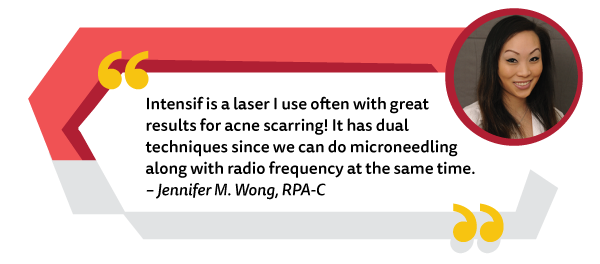We all know that scars can be a bummer, but do you need to spend your time and money on treatments when they might not work? That’s why we’re here to talk about everything scars – what causes them, which treatments work, and what your options are when visiting the dermatologist.
What causes scars?
Scars form when the dermis, or deep layer of your skin, is damaged. When this happens, the body forms new collagen fibers to mend the wound. Sometimes scars are barely visible, and other times they can be raised and uncomfortably noticeable. Scars on your face, like the ones left by acne, can be particularly uncomfortable. Eventually, they can fade, but especially deep ones may stick around and make you feel self-conscious.
How can I prevent scars?
You might have learned growing up that the best thing for a wound is to let it dry out and scar up, but that’s not true! To prevent scarring, the wound needs to be kept as moist as possible.
Cover it in a thin layer of petroleum jelly and wrap that with a bandage, changing the bandage frequently. By doing this, you can promote healing and minimize scarring, improving your chances for smooth skin after the healing process is complete.
In the weeks following your wound or surgery, it’s also wise to stay out of the sun. Any sun exposure will make the scar appear darker, and recent wounds or scars are far more prone to sunburn.
What dermatologist treatments fix scars?
In-office treatments are the most effective way to improve your scar’s appearance. In particular, there are two highly effective treatments we’d like to introduce you to that may help you out. These are most frequently used on facial scars, but may be used on other areas.
Fraxel is a treatment that uses microscopic laser columns to target damaged areas of the skin, remodel collagen, and encourage new collagen growth. It requires no surgery, heals quickly, and stimulates the growth of new cells from the inside out. It can improve the look of both acne and surgical scars, and since it is a non-invasive procedure, there is no significant downtime.
Intensif Radio Frequency Microneedling might also be an option. It uses a pen that contains tiny sterile needles to deliver radiofrequency energy deep into the skin so that it can break up scar tissue and encourage new collagen growth. Intensif can aid in helping you look more youthful and most important of all, it can drastically reduce the appearance of acne scars and other skin differences.
There are many other treatments available, such as microdermabrasion, prescription-strength topicals, or even fillers to treat pitted scars. At the dermatologist’s office, you have a bigger arsenal of more effective options, and the experience of your dermatologist on hand to tell you exactly which one you need to pick.
If you have an unsightly scar, and you are curious about an in-office treatment, or even just which over-the-counter remedy to use, get in touch with us! Our New York and New Jersey dermatologist’s offices have experienced professionals waiting to help you get a little bit of your confidence back.

